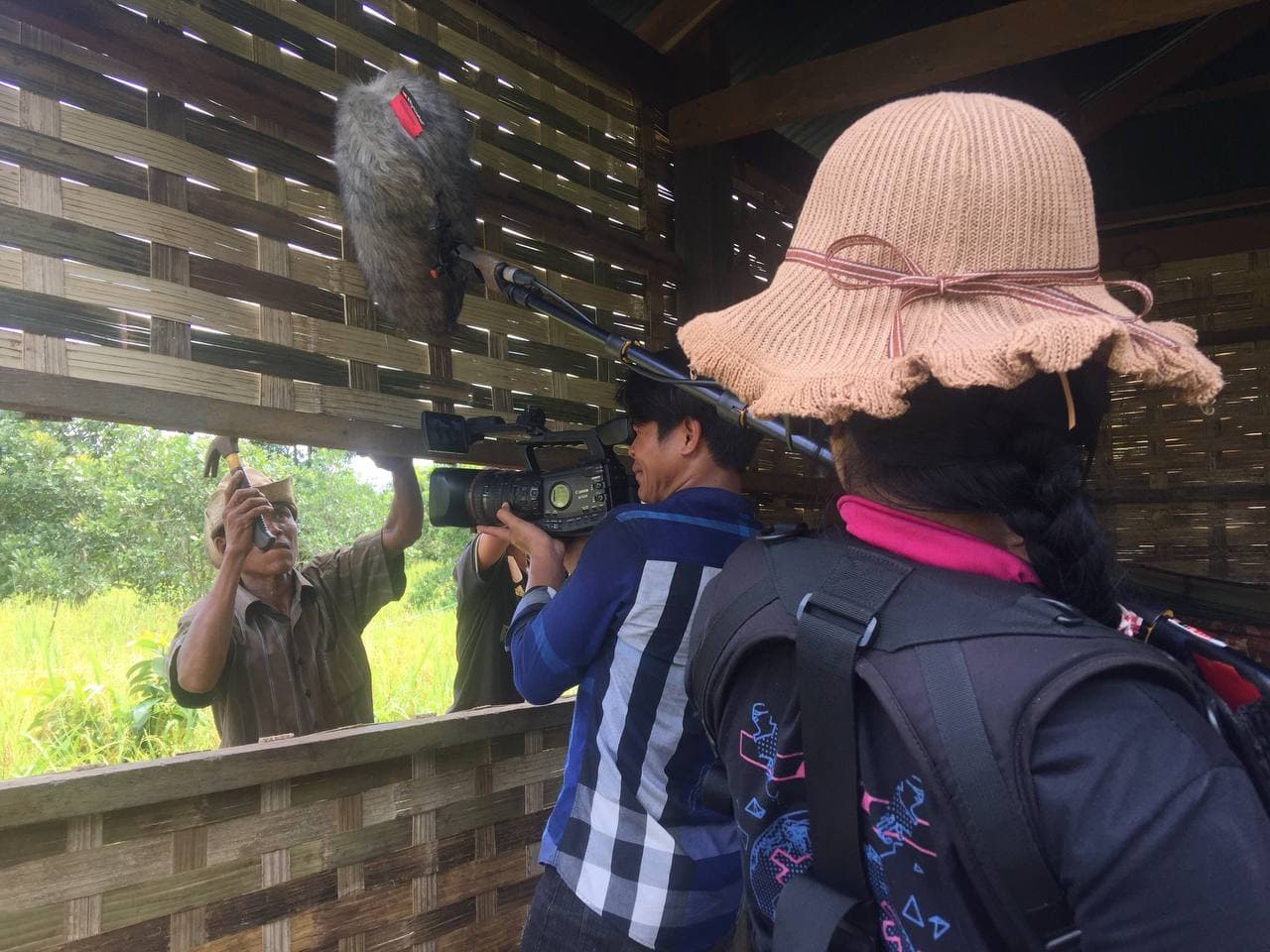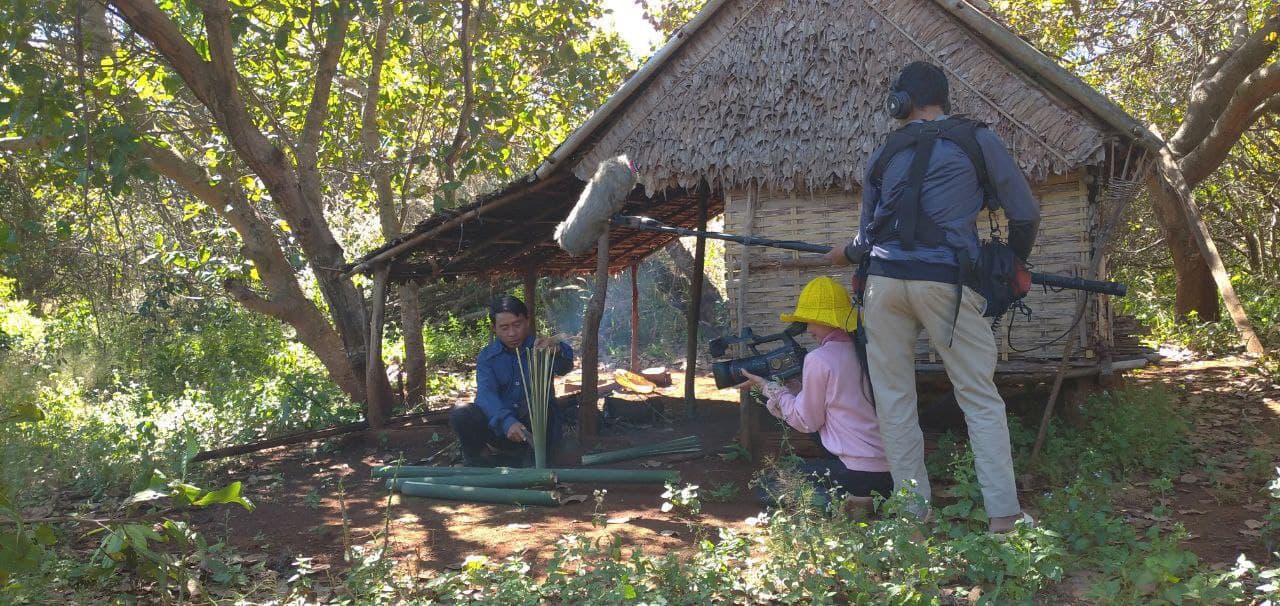Tampuan People on:
[Wikipedia]
[Google]
[Amazon]
The Tampuan (also spelled ''Tompuan'”Tompoun” or “Om Poun” called in their own language or ''Tampuon'', ''Tumpoun', ) are an indigenous ethnic group living in northeast








 The Tampuan people are a
The Tampuan people are a
Picture
{{Ethnic groups in Cambodia Ethnic groups in Cambodia
Cambodia
Cambodia, officially the Kingdom of Cambodia, is a country in Southeast Asia on the Mainland Southeast Asia, Indochinese Peninsula. It is bordered by Thailand to the northwest, Laos to the north, and Vietnam to the east, and has a coastline ...
. Numbering about 31,000, the Tampuan people live in the mountainous Southern and Western portions of the Cambodian province of Ratanakiri. They have their own language of the Mon–Khmer language family.
Tampuans, along with the other Mon-Khmer groups of the mountains, are referred to as Khmer Loeu
The Khmer Loeu ( ; "upper Khmers") is the collective name given to the various indigenous ethnic groups residing in the highlands of Cambodia. The Khmer Loeu are found mainly in the northeastern provinces of Ratanakiri, Stung Treng, and Mo ...
("Upper Khmer") by the Khmer majority. In English, montagnards, a designation given to all hill tribes in the former French Indochina
French Indochina (previously spelled as French Indo-China), officially known as the Indochinese Union and after 1941 as the Indochinese Federation, was a group of French dependent territories in Southeast Asia from 1887 to 1954. It was initial ...
is often used. Though historically their language has been without a writing system, in the last ten years an NGO
A non-governmental organization (NGO) is an independent, typically nonprofit organization that operates outside government control, though it may get a significant percentage of its funding from government or corporate sources. NGOs often focus ...
has overseen the creation of a writing system, based on the Cambodian alphabet. However, fewer than 80% of Tampuans are literate.
Culture







 The Tampuan people are a
The Tampuan people are a mountain people
Hill people, also referred to as mountain people, is a general term for people who live in the hills and mountains.
This includes all rugged land above and all land (including plateaus) above elevation.
The climate is generally harsh, with s ...
, living in communal villages that range from 100 to 400 inhabitants. The villages are often laid out in a square, with a communal house (Tampuan: ), in the center. Today many Tampuan villages have a communal well, volleyball
Volleyball is a team sport in which two teams of six players are separated by a net. Each team tries to score points by grounding a ball on the other team's court under organized rules. It has been a part of the official program of the Summ ...
court, or rice mill in the center as well. In addition to a village home, most Tampuans have a second residence on their farm.
Houses are built on three- to 6-foot-tall () stilts to catch cool breezes. The walls, floor, roof and doors are made of split woven bamboo. Normally, houses are rectangular in shape, averaging five meters by three meters. Today, many rich Tampuans build wooden houses with corrugated steel roofs, a mark of luxury. In some areas, Tampuans live in communal longhouses that can be up to in length.
Family structure
Tampuans have amatrilineal
Matrilineality, at times called matriliny, is the tracing of kinship through the female line. It may also correlate with a social system in which people identify with their matriline, their mother's lineage, and which can involve the inheritan ...
system of marriage, with the family name and inheritance passing through the mother’s side of the family. Normally, Tampuans marry between the ages of fourteen and eighteen. In accordance with tradition, the young couple lives with and serves the family of the bride for three years, and then moves to serve the grooms family for an additional three years. At this point, the young couple is considered to be of age, capable of starting their own farm. Bigamy
In a culture where only monogamous relationships are legally recognized, bigamy is the act of entering into a marriage with one person while still legally married to another. A legal or de facto separation of the couple does not alter their mar ...
is tolerated but not common.
The average married Tampuan woman bears six to eight children in her lifetime, but due to high infant mortality rates and poor medical care, fewer than six usually survive to adulthood.
Diet
The Tampuan diet consists almost entirely of rice, supplemented by fish or stewed vegetables. Though Tampuans may raise chickens, pigs, dogs, cows, and water buffalo for food, the meat is rarely eaten apart from an animistic religious sacrifice. Tampuans also usecrossbow
A crossbow is a ranged weapon using an Elasticity (physics), elastic launching device consisting of a Bow and arrow, bow-like assembly called a ''prod'', mounted horizontally on a main frame called a ''tiller'', which is hand-held in a similar f ...
s or guns to hunt wild boars, pheasants, deer and small rodents. Bugs and ants are often consumed as snacks. Tampuans hold a number of foods to be taboo, according to the clan into which one is born.
Agriculture
Nearly all Tampuans aresubsistence farmer
Subsistence agriculture occurs when farmers grow crops on smallholdings to meet the needs of themselves and their families. Subsistence agriculturalists target farm output for survival and for mostly local requirements. Planting decisions occu ...
s, practicing a form of rotational slash and burn agriculture. The land surrounding the village is communally owned, with each village member planting on his designated section. When the nutrients on a particular plot of land are depleted, usually after two or three years, a new plot is cleared, burned, and prepared for planting. The previous plot is left to lie fallow for a period of years. The vast majority of Tampuans plant dry-land rice.
Religion
Tampuans are animists, believing that spirits inhabit all things. Spirits, and especially evil spirits, must be appeased through animal sacrifices. Violating the evil spirit’s commands causes sickness. Mediums and sorcerers are common, and are paid to speak the will of the spirits.Arts
The Tampuans are a very musical people. They learn from a young age to play fiddles, stringed banjos,drum
The drum is a member of the percussion group of musical instruments. In the Hornbostel–Sachs classification system, it is a membranophone. Drums consist of at least one membrane, called a drumhead or drum skin, that is stretched over a ...
s, flute
The flute is a member of a family of musical instruments in the woodwind group. Like all woodwinds, flutes are aerophones, producing sound with a vibrating column of air. Flutes produce sound when the player's air flows across an opening. In th ...
s, and gongs. Gong
A gongFrom Indonesian language, Indonesian and ; ; zh, c=鑼, p=luó; ; ; ; ; is a percussion instrument originating from Southeast Asia, and used widely in Southeast Asian and East Asian musical traditions. Gongs are made of metal and ...
s are their most important instruments. The gongs are made of hammered bronze, and consist of a set of five for rhythm and another set of eight for the melody. Playing gongs is a communal affair; thirteen men play gongs and two play percussion. Often the gongs are accompanied by dancing. Traditionally, men play instruments and women sing.
See also
*Bahnaric languages
The Bahnaric languages are a group of about thirty Austroasiatic languages spoken by about 700,000 people in Vietnam, Cambodia, and Laos. Paul Sidwell notes that Austroasiatic/ Mon–Khmer languages are lexically more similar to Bahnaric and Katu ...
* Mon–Khmer
* Ratanakiri
General:
* List of ethnic groups in Cambodia
References
Further reading
*Crowley, James Dale, Vay Tieng, & Wain Churk. (2007). ''Tampuan Khmer English dictionary: with English Khmer Tampuan glossary''. Cambodia: EMU International & National Language Institute of the Royal Academy of Cambodia. . *Crowley, James Dale. (2000). Tampuan phonology. ''Mon-Khmer Studies
''Mon-Khmer Studies'' was an academic journal that focused on Mon-Khmer languages. It was established in 1964 and ceased publication in 2016. From 1992 onwards, it was published by Mahidol University and SIL International
SIL Global (formerl ...
'' 30:1-21.
External links
Picture
{{Ethnic groups in Cambodia Ethnic groups in Cambodia